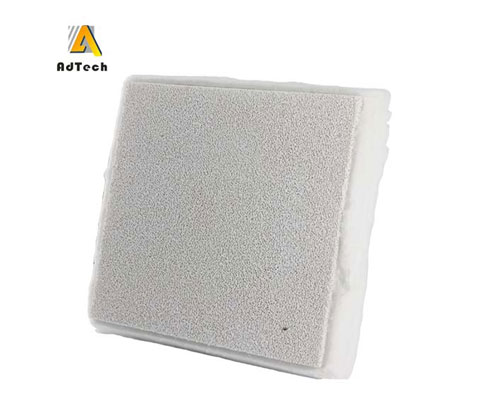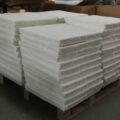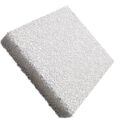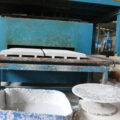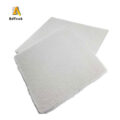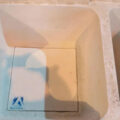Casting Ceramic Foam Filter is a kind of porous material, which has the characteristics of three-dimensional network structure and high porosity. Due to the special structure of ceramic foam, it has the advantages of low density, high porosity, high specific strength, good thermal shock resistance, high temperature resistance and so on. Therefore, foam ceramics are widely used in gas-liquid filtration separation, purification, chemical catalysis, shock absorption, high thermal insulation materials, bio-implant materials and sensors.
Casting ceramic foam filter is one of the most widely used industries. Its function is to make the turbulent metal liquid become stable, uniform and clean after passing through the ceramic foam filter, thereby greatly reducing the casting defects caused by the casting defect rate and saving the production cost.
Ceramic Foam Filter Production Technology
The Ceramic Filter Manufacturing Process uses polyurethane foam as a carrier, immersed in a slurry made of ceramic powder, binder, sintering agent, and suspending agent, squeezes out the excess paste, and then evenly coats the ceramic slurry. The main body is formed on the carrier frame, dried and made by high-temperature sintering. This process is also known as the organic foam impregnation method, and is currently a mature production technology. Generally speaking, the larger the value of PPI (pores per inch), the smaller the corresponding pore size, and the smaller the filtered inclusions.
Use of Foam Furnace Filter
- Select the appropriate filter material according to the melting point of the alloy to avoid high temperature, damage the filter function, and fail to meet the filtering effect.
- Choose the corresponding mesh, and the purification effect should meet the casting requirements.
- Pouring temperature at the limit of the process, as much as possible to increase the fluidity of the metal.
- The filter plate is placed horizontally in the filter box, and the pouring height should not exceed 20 cm.
- The filter should be handled gently. When not in use, place it in a dry and ventilated place to prevent moisture absorption from affecting the strength of the filter.

